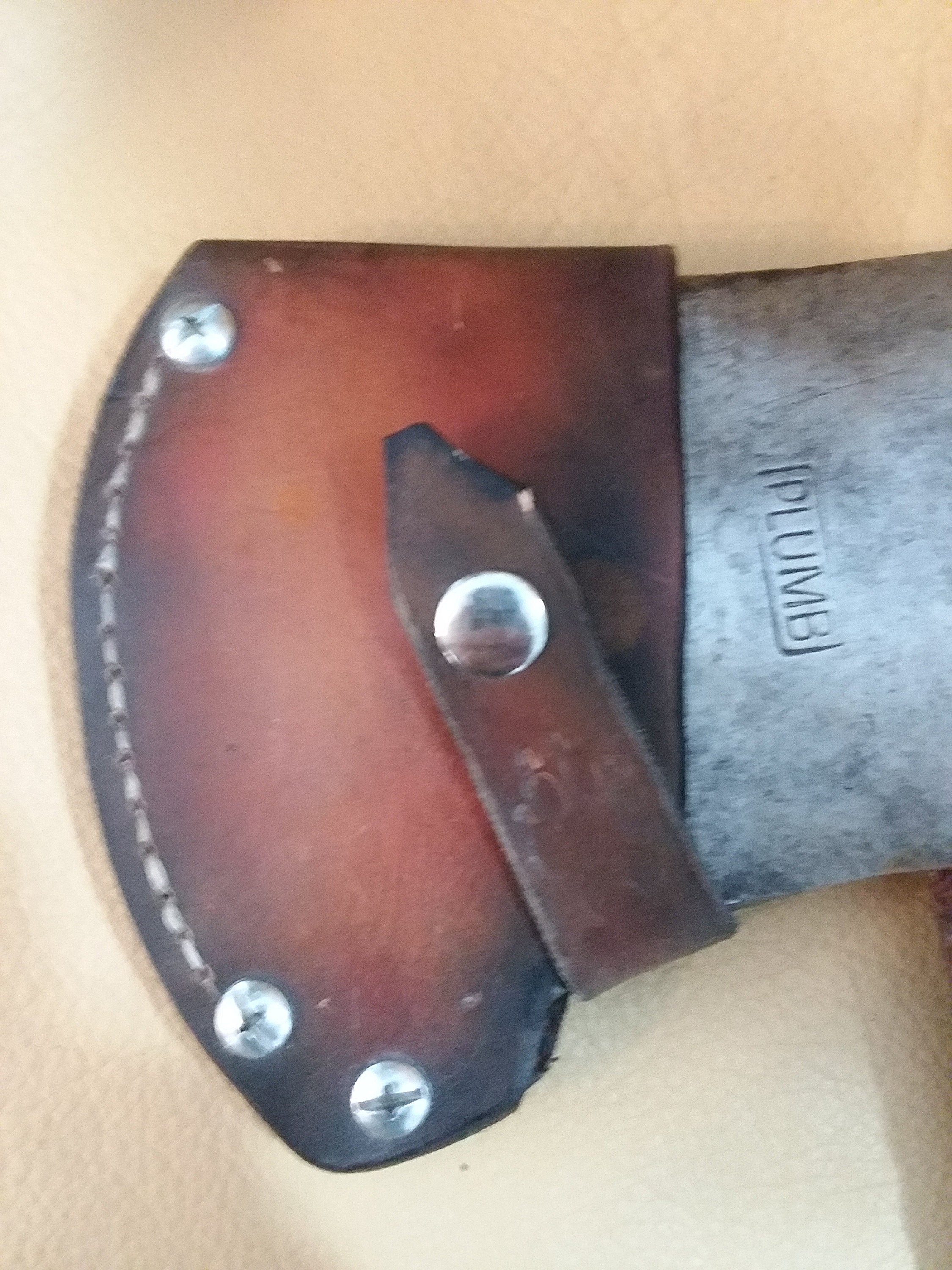Ceramic knives are harder but more brittle than steel knives, making them more prone to breaking. They are also more difficult to sharpen and not suitable for all-purpose use.
In the world of knives, there are two primary contenders: ceramic and steel. Ceramic knives are known for their exceptional hardness and sharpness, while steel knives have a long-standing reputation for their strength and versatility. But how do they compare?
We will explore the differences between ceramic and steel knives, examining their advantages, disadvantages, and which one might be the best fit for your needs. Whether you’re a professional chef or a home cook, understanding the pros and cons of these two materials will help you make an informed decision when it comes to choosing the right knife for your kitchen. So, let’s dive in and discover the differences between ceramic and steel knives.
Understanding The Differences Between Ceramic And Steel Knives
Understanding the differences between ceramic and steel knives is essential for choosing the right kitchen tool. Ceramic knives are incredibly sharp and retain their edge for a long time, but they are more brittle and can break under pressure. On the other hand, steel knives are more versatile and easier to sharpen, making them the preferred choice among professional chefs.
When it comes to choosing the right knife for your kitchen, it’s important to understand the differences between ceramic and steel knives. Each type has its own unique properties and features, along with its own set of advantages and disadvantages.
We will take a closer look at ceramic knives and steel knives, exploring their qualities to help you make an informed decision.
Ceramic Knives: Properties And Features
Ceramic knives have gained popularity in recent years due to their sharpness and durability. Here are some key properties and features of ceramic knives:
- Made from zirconia, an extremely hard and brittle material that ensures excellent sharpness.
- Ceramic knives are lightweight and comfortable to handle, reducing fatigue during prolonged use.
- Corrosion-resistant, making them ideal for cutting fruits, vegetables, and other acidic foods.
- Non-reactive, which means they won’t transfer any metallic taste or smell to your food.
- Retain their sharpness for a longer time compared to steel knives.
Advantages of Ceramic Knives:
- Exceptional sharpness: Ceramic knives are known for their razor-sharp edges, making precise and clean cuts effortlessly.
- Minimal maintenance: They do not require regular honing or sharpening like steel knives, saving you time and effort.
- Lightweight design: Their light weight reduces strain on your wrist and hand, ensuring comfort during prolonged use.
- Non-reactive: Ceramic knives don’t corrode and won’t react with acidic or alkaline ingredients, maintaining the flavors of your food.
- Hygienic: Ceramic knives have a non-porous surface, resisting bacteria growth and ensuring food safety.
Disadvantages of Ceramic Knives:
- Brittle nature: Ceramic knives are prone to breaking or chipping if mishandled or used on hard surfaces. They should be used on cutting boards made of wood or plastic.
- Limited versatility: Ceramic knives are not suitable for heavy-duty tasks such as cutting bones or frozen food.
- Careful handling required: They need to be stored separately, as contact with other knives or hard surfaces can cause damage.
- Need professional sharpening: If your ceramic knife does become dull, it will require professional sharpening, as sharpening at home can be challenging.
Steel Knives: Properties And Features
Steel knives have been the traditional choice for kitchen tasks for many years. Here are some key properties and features of steel knives:
- Made from a combination of iron and carbon, offering a balance between hardness and toughness.
- Steel knives are versatile and can handle a wide range of cutting tasks.
- Come in various types of steel such as stainless steel and high carbon steel, offering different benefits.
- Can be easily sharpened at home using sharpening stones or honing rods.
Advantages of Steel Knives:
- Versatility: Steel knives can handle a variety of tasks in the kitchen, including cutting meat, chopping vegetables, and more.
- Durability: Steel knives are generally sturdy and can withstand heavy use, making them suitable for rigorous culinary tasks.
- Easy maintenance: They can be easily sharpened using various methods, ensuring they stay sharp for a long time.
- Wide range of options: Steel knives come in different types and styles, allowing you to choose the one that suits your preferences and budget.
Disadvantages of Steel Knives:
- Prone to rust: Some steel knives can rust if not properly dried after use or exposed to moisture for an extended period.
- Regular maintenance: Steel knives require regular sharpening and honing to maintain their sharpness.
- Possibility of metallic taste: Steel knives can sometimes transfer a metallic taste or smell to certain foods.
- Heavier weight: Steel knives are generally heavier than ceramic knives, which can cause fatigue during prolonged use.
When choosing between ceramic and steel knives, consider your specific kitchen needs and preferences. Ceramic knives excel in terms of sharpness and maintenance ease, while steel knives offer versatility and durability. Ultimately, the choice between ceramic and steel knives comes down to your individual cooking style and requirements.
Comparing The Cutting Performance
Comparing the cutting performance of ceramic and steel knives, ceramic knives are known for their hardness but are prone to breakage under lateral pressure compared to steel knives. While ceramic knives have the advantage of retaining their sharpness for longer periods, steel knives are more versatile and easier to sharpen.
Sharpness And Retention
When comparing the cutting performance of ceramic and steel knives, two essential factors to consider are sharpness and edge retention.
- Ceramic knives are known for their exceptional sharpness. The hardness of ceramic material allows for a razor-sharp edge, resulting in precise and effortless cuts.
- Steel knives, on the other hand, offer a good balance between sharpness and durability. While they may not be as sharp as ceramic knives, steel knives can maintain their edge for longer periods.
The Cutting Edge: Ceramic Vs Steel
Edge retention is a crucial aspect to consider when choosing a knife. Here’s how ceramic and steel knives fare when it comes to edge retention:
- Ceramic knives have excellent edge retention. The hardness of ceramic material helps the blade to stay sharp for a longer time, reducing the need for frequent sharpening.
- Steel knives, although they may require more regular sharpening, have the advantage of being easily honed back to a sharp edge. With proper maintenance, steel knives can provide long-term edge retention.
Versatility And Durability
The versatility and durability of knives play a significant role in their cutting performance. Let’s compare ceramic and steel knives in these aspects:
- Ceramic knives are ideal for precision cutting tasks such as slicing fruits and vegetables. However, they may not be suitable for heavy-duty tasks like cutting through bones or hard root vegetables.
- Steel knives, with their strength and versatility, can handle a wide range of cutting tasks. They are suitable for both delicate and demanding tasks, making them a popular choice for professional chefs.
Flexibility And Deformability: Ceramic Vs Steel
When it comes to flexibility and deformability, there are noticeable differences between ceramic and steel knives:
- Ceramic knives are rigid and inflexible. They cannot be bent or flexed without the risk of breaking. This rigidity makes them unsuitable for tasks that require some degree of flexibility.
- Steel knives offer a certain degree of flexibility. They can withstand bending or flexing without breaking, allowing for more versatile cutting motions.
Resistance To Chipping And Breaking: Ceramic Vs Steel
The resistance to chipping and breaking is an essential factor in determining the durability of a knife. Let’s see how ceramic and steel knives compare in this regard:
- Ceramic knives are highly prone to chipping or breaking if subjected to improper handling or if used to cut hard materials. They require careful handling and should not be used for tasks that may put excessive stress on the blade.
- Steel knives, with their inherent strength, are more resistant to chipping and breaking. They can withstand tougher cutting tasks and accidental impacts more effectively than ceramic knives.
Maintenance And Sharpening
Maintenance and sharpening play a crucial role in the long-term performance of a knife. Let’s compare ceramic and steel knives in terms of maintenance and sharpening:
- Ceramic knives are relatively low maintenance. They are resistant to rust and do not require frequent sharpening. However, when they do require sharpening, it is best to seek professional services due to the specialized equipment needed.
- Steel knives require regular maintenance, including cleaning, drying, and occasional honing/sharpening. They are more forgiving when it comes to sharpening, as various techniques and tools can be used to restore their sharp edges.
Ease Of Maintenance: Ceramic Vs Steel
In terms of maintenance, ceramic and steel knives have different requirements:
- Ceramic knives are easy to maintain as they are resistant to corrosion and do not absorb odors. Simply rinse them after use and allow them to air-dry. However, caution must be taken to avoid accidental impact or dropping, as this can lead to breakage.
- Steel knives require a bit more attention. They should be washed, dried, and stored properly to prevent rusting or damage. Additionally, regular honing and occasional sharpening are necessary to maintain their cutting performance.
Sharpening Techniques: Ceramic Vs Steel
Sharpening knives is an essential skill to keep them in optimal cutting condition. Here’s how ceramic and steel knives differ in terms of sharpening techniques:
- Ceramic knives require specialized sharpening equipment due to their hardness and brittleness. It is recommended to seek professional sharpening services or use diamond-coated sharpening tools specifically designed for ceramic blades.
- Steel knives can be sharpened using a variety of methods, including whetstones, rod honing, or electric sharpeners. The versatility in sharpening techniques makes it easier for users to maintain the sharpness of their steel knives.
Remember, whether you choose a ceramic or steel knife, understanding their cutting performance is crucial for selecting the right tool for your specific cutting needs.
Suitability For Different Cutting Tasks
When it comes to suitability for different cutting tasks, ceramic knives offer the advantage of being harder than steel. However, they are more brittle and can break if twisted or flexed, making them less versatile than steel knives.
The Culinary Experience: Ceramic Vs Steel
When it comes to the culinary experience, both ceramic and steel knives have their own unique advantages and disadvantages. Here’s what you need to know:
- Ceramic Knives:
- Extremely sharp and retain their edge for a longer period
- Lightweight and comfortable to handle
- Non-reactive to acidic foods, preserving the flavors
- Rust-proof and resistant to corrosion
- Require special care and cannot withstand heavy-duty tasks
- Can chip or break if not handled properly
- Steel Knives:
- Versatile and suitable for a wide range of cutting tasks
- Durable and can withstand heavy-duty use
- Easy to sharpen and maintain
- Comes in different varieties (stainless steel, carbon steel, etc.)
- Prone to rust and corrosion if not properly cared for
- Can react with acidic foods, altering the taste
Precision Slicing And Dicing: Ceramic Vs Steel
When it comes to precision slicing and dicing, the choice between ceramic and steel knives can make a significant difference. Consider the following:
- Ceramic Knives:
- Extremely sharp blades allow for precise cuts
- Lightweight and agile, perfect for delicate slicing
- Retain their edge for a longer period, requiring less frequent sharpening
- Ideal for fruits, vegetables, and boneless meats
- Not suitable for cutting through hard or frozen foods
- Steel Knives:
- Versatile and can handle a wide range of cutting tasks
- Can be sharpened to a fine edge for precise cuts
- Available in different blade shapes and sizes to accommodate various slicing techniques
- Suitable for both delicate and tougher cutting tasks
- Can easily handle hard or frozen foods
Heavy Duty Kitchen Tasks: Ceramic Vs Steel
When it comes to heavy-duty tasks in the kitchen, the durability and strength of the knife are crucial. Consider the following:
- Ceramic Knives:
- Not suitable for heavy-duty tasks such as cutting through bones or frozen foods
- Can chip or break if subjected to excessive force or twisting
- Best suited for slicing fruits, vegetables, and boneless meats
- Steel Knives:
- Designed to withstand heavy-duty use
- Can easily handle cutting through bones and frozen foods
- Offered in different grades, with higher carbon content providing greater strength
- Ideal for chopping, slicing, and dicing a wide variety of ingredients
Outdoor And Utility Applications
Apart from their use in the kitchen, both ceramic and steel knives can find utility in outdoor and survival settings. Consider the following:
- Camping and Survival: Ceramic vs Steel
- Ceramic Knives:
- Lightweight and portable for outdoor activities
- Ideal for slicing fruits, vegetables, and preparing meals on the go
- Not suitable for heavy-duty tasks or survival situations
- Steel Knives:
- Versatile and durable for outdoor use
- Can handle heavy-duty tasks such as cutting ropes or preparing firewood
- Ideal for survival situations where strength and versatility are essential
Everyday Use In The Home: Ceramic Vs Steel
In everyday use within the home, both ceramic and steel knives have their advantages and considerations. Consider the following:
- Ceramic Knives:
- Lightweight and comfortable for everyday use
- Retain their edge for a longer period, reducing the need for frequent sharpening
- Ideal for slicing fruits, vegetables, and boneless meats
- Require special care to prevent chipping or breaking
- Steel Knives:
- Versatile and suitable for a wide range of everyday tasks
- Durable and can handle cutting through various ingredients
- Require regular sharpening to maintain their edge
- Prone to rust and corrosion if not properly cared for
Both ceramic and steel knives have their own unique characteristics that make them suitable for different cutting tasks. Ceramic knives excel in precision cutting and lightweight applications, while steel knives are more versatile and can handle heavy-duty tasks. Consider your specific needs and preferences when choosing between the two.

Credit: www.etsy.com
Conclusion
Ceramic knives and steel knives both have their advantages and disadvantages, and choosing the right one for you ultimately depends on your specific needs and preferences. Ceramic knives are known for their exceptional sharpness and the fact that they retain their edge for a longer time compared to steel knives.
They are also lightweight and resistant to rust, making them a popular choice among those who want a low-maintenance knife. However, they are more brittle than steel knives and can chip or break if not used and cared for properly.
On the other hand, steel knives are durable, versatile, and can withstand more rigorous use. They can be easily sharpened and offer more flexibility in terms of blade types and handles. However, they are more prone to rusting and require regular maintenance to ensure optimal performance.
While ceramic knives may be suitable for certain tasks, steel knives remain the preferred choice for professional chefs and those who require a versatile, reliable blade in the kitchen.

This is Kristina, a passionate content writer, copywriter, and bookworm. Always dedicated to providing informative and accurate product reviews for enjoyable shopping. In my free time, I love spending time in nature and with animals and doing yoga.

